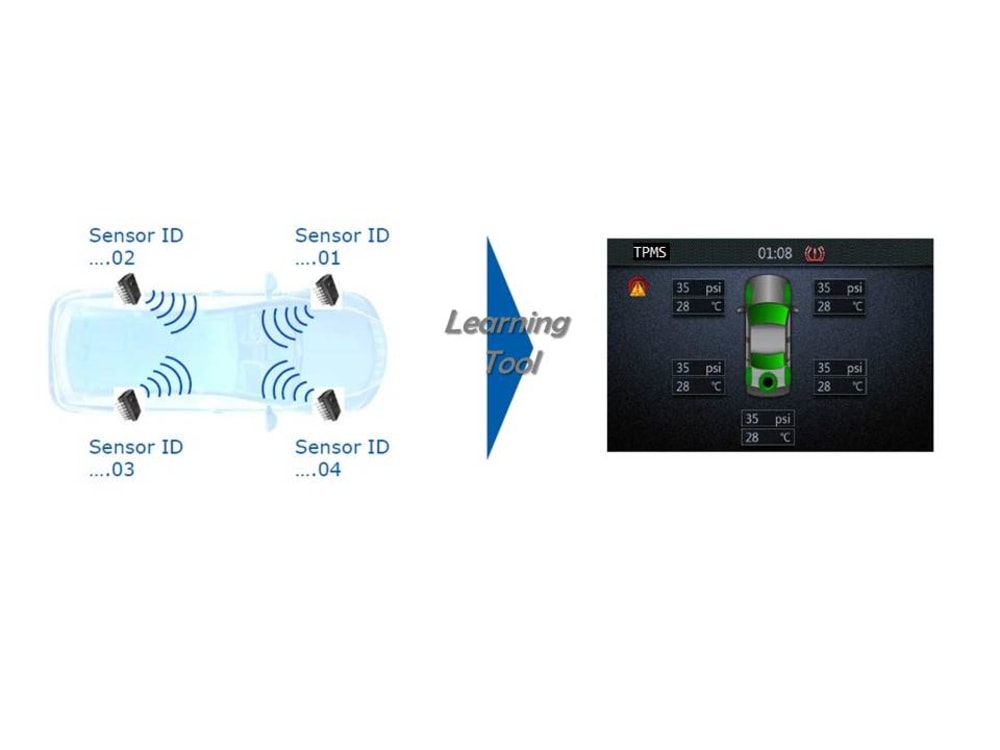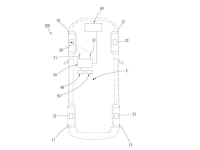To ensure driving safety, tire pressure monitoring systems have been strictly regulated in every new vehicle from 2008 in the USA, 2014 in Europe and Taiwan, 2015 in Japan, 2016 in Korea, and 2018 in China. However, the inconvenience to define tire position correctly after a tire rotation, snow tire change, or new sensor replacement has been a challenge with these systems, which causes a position accuracy problem. In addition, drivers must go to the factory or tire store to set up their systems, which is an added expense and a time waste.
This creation is an innovative tire pressure monitoring method for renovating an existing tire pressure monitoring system (TPMS). It has been issued patent applications in the USA, Taiwan, and China. This method is comprised of four sensors (20, 21, 22, 23): a signal receiver (30), a dual antenna (31, 32), a phase processor (40), a central processing unit (50), and a display device (60), and it automatically identifies tire position (10, 11, 12, 13). What separates this tire monitoring system from commercially available systems that must learn the tire position manually or semi-automatically using a learning tool or procedure after the tires are equipped with the sensors, is that this inventive system automatically identifies the positions of each tire in a similar manner as the human auditory system identifies the orientation of a voice with 100% accuracy. The only difference between this creation and current TPMSs is the implementation of a phase processor and installation of a phase calculation protocol into the central processing unit of the signal receiver, which is easy to mass produce and reduces the cost of the learning tool.
The sensors (20, 21, 22, 23) monitor the pressure of each tire on the vehicle. When the tires roll, each sensor transmits a wireless signal to the signal receiver (30), which collects the tire data via wireless signal using a dual antenna structure (31, 32). The phase processor (40) then processes the information it receives via wireless signal. Due to the distance values of the individual tires and the signal receiver (30), the central processing unit (50) converts the respective phase difference values to identify the vehicle’s tire positions. Finally, the display device (60) displays the tire position and its corresponding tire pressure value.
Advantages of this system include:
(1) Reduced expenses and time to set the tire position automatically;
(2) Lower cost than commercially available TPMS;
(3) Compatible with every tire sensor, from original (OE) to after-market (AM) equipment.
Like this entry?
-
About the Entrant
- Name:Henry Huang
- Type of entry:individual
- Software used for this entry:C++ language
- Patent status:pending





